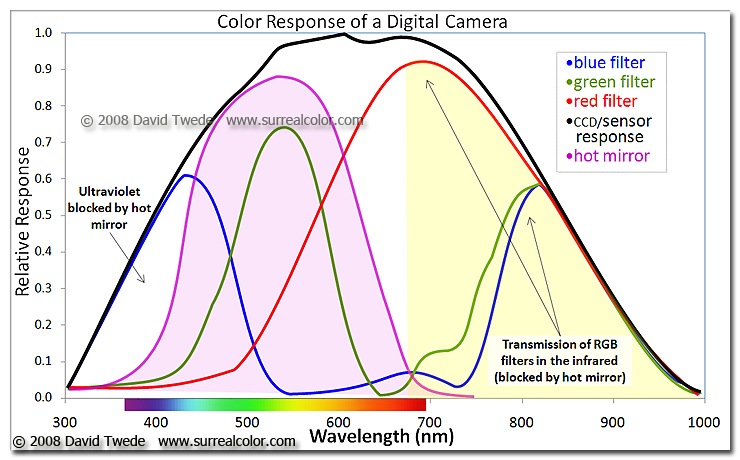Is it worth it to remove the Bayer array?
Feb 23, 2021 22:28:07 #
selmslie wrote:
You asked about converting a color image to B&... (show quote)
I guess I am not being cleared. Many say why remove the Bayer or pay for a mono camera when you can just convert a color image to B&W in software. One argument is increase in resolution of which there are images on web to support this. My question is: Is it even possible to guarantee a proper B&W luminance conversion. One writer said you adjust each different color pixel by so many stops each to account for different inherent luminance differences between colors. But to me that assumes something about the number of photos reaching a pixel is coming from that color. This would not be true for an all blue picture where all the photons on the red pixel come from blue wavelength, photos with more energy than red ones. In writing this, it occurred to me that maybe the process solves simultaneous equations to get the contribution from each color to each pixel. Thus red = 100%R + X%G + Y%B; blue = W%R + ...; factors for color energy response would be needed, etc. The values for X, etc. would be obtained from the curves you provided and might well be somewhat camera specific which would make the process again only somewhat accurate depending probably more on the Bayer filter than the sensor I would think.
Just wondering how it is really done in software if anyone knows? I'll look sometime and see if anything I have in Python or other code shows anything. I don't see how other than a pre-written option in something like PhotoShop could get it correct for a solid one color image or something close.
Thanks for response and sorry for any confusion;
Jim
Feb 24, 2021 03:31:36 #
JBRIII wrote:
I guess I am not being cleared. Many say why remov... (show quote)
You are over-thinking this.
Just take a picture and edit it until it looks right.
If you want to reply, then register here. Registration is free and your account is created instantly, so you can post right away.

